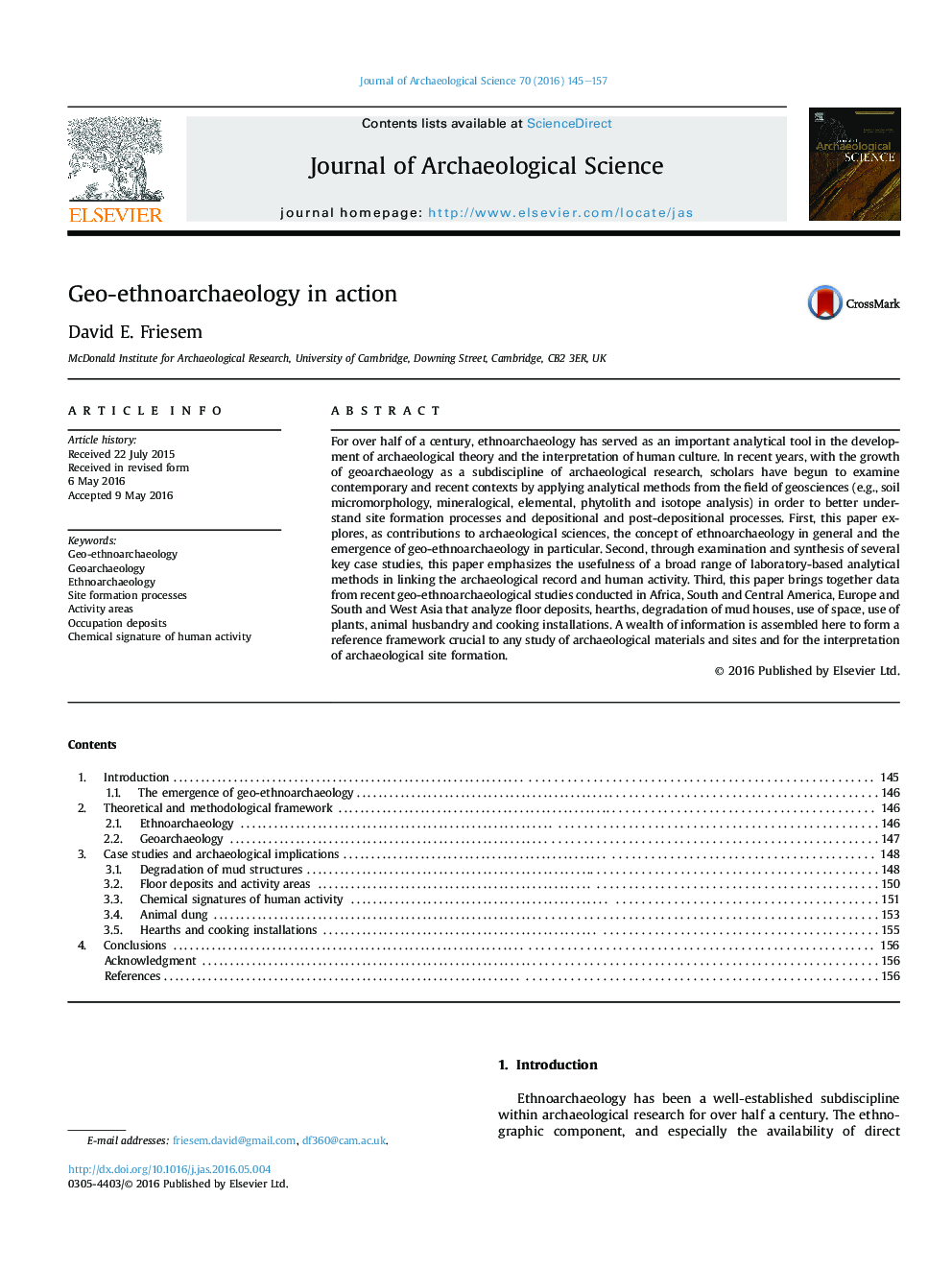| Article ID | Journal | Published Year | Pages | File Type |
|---|---|---|---|---|
| 7441412 | Journal of Archaeological Science | 2016 | 13 Pages |
Abstract
For over half of a century, ethnoarchaeology has served as an important analytical tool in the development of archaeological theory and the interpretation of human culture. In recent years, with the growth of geoarchaeology as a subdiscipline of archaeological research, scholars have begun to examine contemporary and recent contexts by applying analytical methods from the field of geosciences (e.g., soil micromorphology, mineralogical, elemental, phytolith and isotope analysis) in order to better understand site formation processes and depositional and post-depositional processes. First, this paper explores, as contributions to archaeological sciences, the concept of ethnoarchaeology in general and the emergence of geo-ethnoarchaeology in particular. Second, through examination and synthesis of several key case studies, this paper emphasizes the usefulness of a broad range of laboratory-based analytical methods in linking the archaeological record and human activity. Third, this paper brings together data from recent geo-ethnoarchaeological studies conducted in Africa, South and Central America, Europe and South and West Asia that analyze floor deposits, hearths, degradation of mud houses, use of space, use of plants, animal husbandry and cooking installations. A wealth of information is assembled here to form a reference framework crucial to any study of archaeological materials and sites and for the interpretation of archaeological site formation.
Related Topics
Physical Sciences and Engineering
Materials Science
Materials Science (General)
Authors
David E. Friesem,
